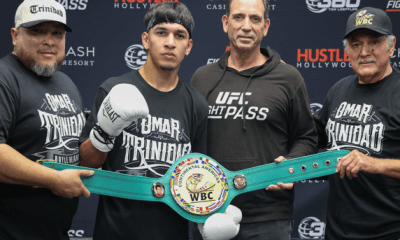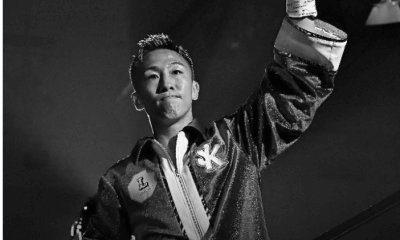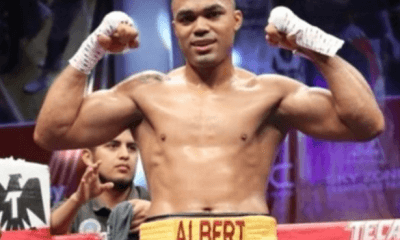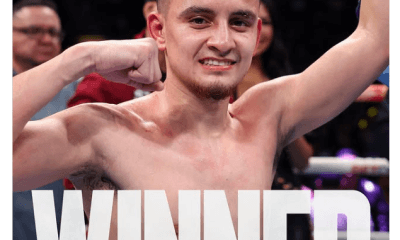Argentina
Joe Frazier and his trainer Yank Durham, a Great Combination
Many past heavyweight greats were closely aligned with their trainer. Joe Louis had Jack Blackburn, Rocky Marciano had Charlie Goldman, Muhammad Ali had Angelo Dundee and “Smokin” Joe Frazier had Yancey “Yank” Durham.
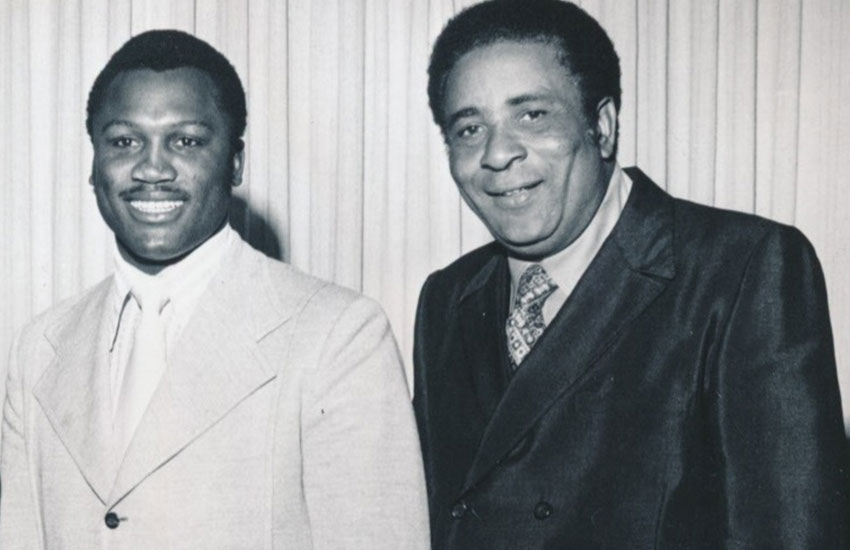
Many past heavyweight greats were closely aligned with their trainer. Joe Louis had Jack Blackburn, Rocky Marciano had Charlie Goldman, Muhammad Ali had Angelo Dundee and “Smokin” Joe Frazier had Yancey “Yank” Durham. Yank remained with Frazier from 1961-73, encompassing his pro debut up to his 31st bout, and Frazier went 30-1 (25) with Yank in his ear.
Among his 30 victims were Eddie Machen, Oscar Bonavena twice, George Chuvalo, Buster Mathis, Jerry Quarry, Jimmy Ellis, Bob Foster, Joe Bugner and the biggest of all, Muhammad Ali, whom Joe defeated in the “Fight of The Century” in 1971. The lone loss was to George Foreman.
This July 2nd will mark 45 years since “Smokin” Joe last fought with Yank in his corner. His opponent was Joe Bugner 42-5-1 (26), the European heavyweight champion.
In his bout prior to meeting Frazier, the 23-year-old 6-4 225-pound Bugner had gone the 12-round distance with Muhammad Ali. Frazier was coming off his loss to Foreman, a bout in which he took a lot of murderous punches. Prior to facing Foreman, Durham tried in a subtle way to convince Joe that Foreman was all wrong for him, and fighting Clay (Durham always referred to Ali as Clay) again for nearly six times more money than he was getting for defending the title against Foreman was the wiser move. However, Frazier wasn’t about to give Muhammad purse parity again. No, not after defeating him in the biggest fight in boxing history.
Yank Durham was lauded for the way he brought Frazier along when he turned pro after winning a gold medal at the 1964 Olympics in Tokyo. When Yank first started working with Frazier, Joe used to dance around the ring, mimicking Ali. Durham reined that in, conveying to Frazier that he was too short to fight on the outside as Ali did, and that to be successful Joe had to get inside and make his 73-inch reach work for him. When Frazier turned pro in 1965, Ali was the undisputed champ. And it was Durham who profoundly told Frazier that if he ever wanted to be the champ he would have to beat Ali who would be the one standing in his path when he got there. Frazier absorbed everything Durham said, and then worked hard to develop his style so he could nullify Ali’s jab, then work his body as he was cutting the ring off in the process. Frazier became so proficient fighting as a swarmer that he was successful against every opponent he ever fought not named George Foreman.
Going into the Bugner fight, there was a school of thought that the Ali fight had pushed Joe to the edge of the cliff and then Foreman had pushed him off it. Nowadays, the logic would be to put Frazier in soft for his first comeback fight, and to put him in with a fighter he could knock out. Although Bugner wasn’t considered a big threat to beat Joe, he was physically bigger than Ali and Foreman and no one had knocked him out at that point (other than in his pro debut). At the time it seemed like a strange choice as a first opponent back, with the point being you generally give a fighter returning from a devastating loss, especially if it’s their first, a confidence-builder to get him back, and Bugner definitely wasn’t that, but Yank, who often spoke in the first person, had the final say and he seldom guessed wrong when calling the shots for Joe Frazier.
The Frazier-Bugner bout took place at the Earl’s Court Arena, Kensington, London, only the second time Frazier had fought outside the US to that point. Frazier weighed-in at 208, six pounds less than he was for Foreman. Bugner was 221, two pounds more than he was for Ali in his last fight five months earlier.
Frazier started fast against Bugner, pressing him from bell-to-bell while banging him to the body with left and right hooks. In typical Frazier fashion he didn’t allow Bugner the time or room to move or box. In the 10th round Frazier cornered Bugner and dropped him with a left hook to the chin for a nine-count. In the midst of trying to finish him off, Frazier left himself open and Bugner caught him with a chopping right to the chin, buckling Joe’s legs with 10 seconds left in the round. Frazier continued the assault during the 11th and 12th rounds, working Bugner over to the head and body, and the fight went the full route.
Referee Harry Gibbs, who was both judge and referee, raised Frazier’s hand in victory, having scored it in his favor 59.25 to 58.5. Bugner would go down as only the fourth fighter to go the distance with Frazier along with George Johnson, Oscar Bonavena and Muhammad Ali, but the bout dispelled the rumors that Joe was washed up. After the fight, a smiling Frazier said, “I could go with Foreman tomorrow and beat him.”
On August 30, 1973, less than two months after guiding Frazier to his comeback win over Bugner, Durham passed away from a stroke at Temple University Hospital at age 52.
– – –
Yancey “Yank” Durham was a welder for the Pennsylvania Railroad, later the Penn-Central, and began training boxers in Police Athletic League gyms. His fate changed one day in 1961 when a chubby 17-year-old walked into the P.A.L. gym and said he wanted to lose weight and be a fighter. The teenager’s name was Joe Frazier. Three years later, at age 20, Frazier was an Olympic gold medal winner and in 1970 he stopped Jimmy Ellis to win the world heavyweight title.
Yank taught Joe how to slip the jab using great head and upper body movement and to get low and inside on the mostly taller opponents he’d face, while cutting the ring off and working the body at the same time. Prior to his first meeting with Ali, Durham gloated and said, “We developed a style a long time ago to beat Clay, Joe has it down pat now.” Truer words were never spoken by a trainer as Frazier would go on to give Ali the most difficult rounds of his career, 41 rounds in all, encompassing three fights.
The Durham-Frazier team worked great together. In the gym, the biggest disagreements they had pertained to sparring. As conveyed to me by many of Frazier’s close associates, when a particular sparring partner tried to make a name for himself against Joe, he’d ask Yank whose money he paid him with, his or Yank’s? And if the answer was Joe’s, then he showed him no mercy.
When Durham died, Frazier turned to the capable Eddie Futch. Durham and Futch became close in 1966, early in Joe’s career, when Joe had a couple of fights in California where Futch was based. But let the record show that it was Yank Durham who mostly crafted and molded Frazier’s style with a few tweaks by Futch added later, mainly a more active right hand to the head and chin.
Looking back, Durham’s intuition was great when it came to making crucial decisions pertaining to Joe’s career. Consider that when Frazier was in California and sparred with Jerry Quarry, the Quarry faction wanted to match them right away, but Durham shot it down saying that in a few years they would fight for the title with more money on the line and Joe would be better. In June of 1969, Frazier stopped Quarry in seven rounds with Joe’s NYSA and world title on the line.
When Muhammad Ali was stripped of the heavyweight title for refusing military induction, the WBA set up an elimination tournament to determine his successor. Frazier was the top ranked contender at the time, but Durham wouldn’t allow Frazier to participate in the tournament saying, “Joe will just beat the winner.” On February 16, 1970, Frazier stopped Jimmy Ellis who had won the tournament. And it was Durham who tried as diplomatically as he could to persuade Frazier that fighting Foreman made no sense and there was nothing to gain by beating him. Only that time Joe overruled Yank.
Lastly, Yank probably gave the greatest motivational speech a trainer ever gave to a fighter for a big fight. Before his first training session for his 1971 bout against Ali, Durham said, “Joe, this is going to be the hardest thing you ever do in your life, but it’ll be worth it if you win. Remember, Clay doesn’t want to just beat you – he wants to humiliate and embarrass you, and make a complete mockery of you being called the champ. Beat this guy and no matter whatever else you do for the rest of your life the road will be paved!”
On Monday night, March 8th, 1971, Frazier won the most anticipated fight in boxing history, paving his way to the HOF and going down as one of the all-time great heavyweight champions.
Joe Frazier and Yank Durham formed one of the strongest and most successful pairings in boxing history. When Yank passed, he was in the midst of trying to secure a rematch for Joe with Foreman, per Joe’s request.
Frank Lotierzo can be contacted at GlovedFist@Gmail.com
Check out more boxing news on video at The Boxing Channel
-

 Featured Articles3 weeks ago
Featured Articles3 weeks agoThe Hauser Report: Zayas-Garcia, Pacquiao, Usyk, and the NYSAC
-

 Featured Articles2 weeks ago
Featured Articles2 weeks agoOscar Duarte and Regis Prograis Prevail on an Action-Packed Fight Card in Chicago
-

 Featured Articles1 week ago
Featured Articles1 week agoThe Hauser Report: Cinematic and Literary Notes
-

 Book Review4 days ago
Book Review4 days agoMark Kriegel’s New Book About Mike Tyson is a Must-Read
-

 Featured Articles4 weeks ago
Featured Articles4 weeks agoManny Pacquiao and Mario Barrios Fight to a Draw; Fundora stops Tim Tszyu
-

 Featured Articles4 weeks ago
Featured Articles4 weeks agoArne’s Almanac: Pacquiao-Barrios Redux
-

 Featured Articles3 weeks ago
Featured Articles3 weeks agoRemembering Dwight Muhammad Qawi (1953-2025) and his Triumphant Return to Prison
-
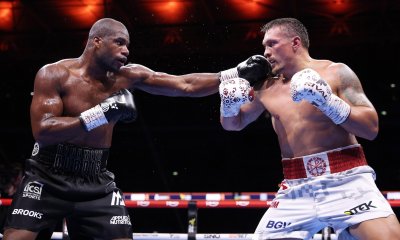
 Featured Articles4 weeks ago
Featured Articles4 weeks agoOleksandr Usyk Continues to Amaze; KOs Daniel Dubois in 5 One-Sided Rounds


